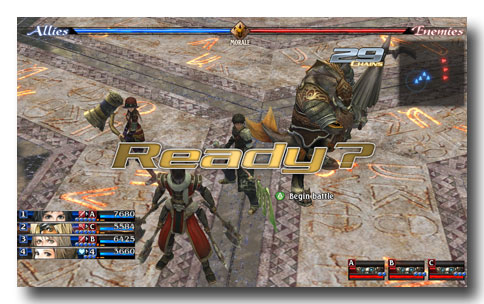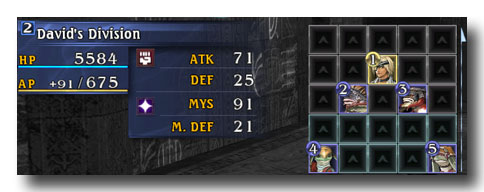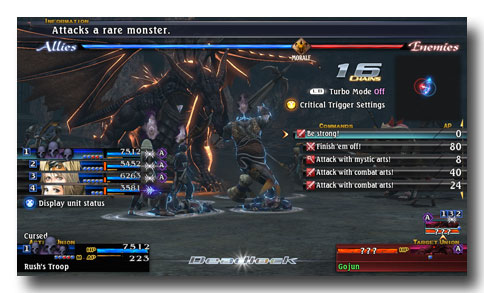
The Last Remnant may not be a Final Fantasy title but it plays like one. Guiding Rush Sykes through the game’s Unreal Engine 3-powered environments is strongly evocative of adventuring with Vaan and company in Final Fantasy XII, and like the 2006 PlayStation 2 game, The Last Remnant provides ample freedom to stray from the main quest to enjoy copious amounts of optional content.
The similarities between the two games aren’t unsurprising given Final Fantasy XII’s popularity outside Japan and Square Enix’s stated intention of making The Last Remnant a cornerstone of its worldwide strategy.
The two games do differ in one aspect and it’s this crucial difference that makes The Last Remnant the lesser game: Final Fantasy XII was designed to streamline battles and minimise tedium whereas The Last Remnant takes the opposite tack.
The Last Remnant’s designers have piled on subsystem after subsystem on what is a simple turn-based battle system and compounded that mistake by withholding information from the player. This is sophistication through obfuscation, complexity through sophistry.
“Obviously something is going on”
The bloat begins with party composition. While a more sensible RPG might be content with a party of four to eight members, The Last Remnant kicks it up several notches by allowing a staggering 50 members in the party, 18 of whom can participate in battles.
To simplify command and control during combat, the active 18 party members are organised in squads called unions. There can be a maximum of five unions with each union having up to five members.

In theory, union organisation should provide rich tactical possibilities and allow exciting experimentation. In practice, the game’s skill development system encourages union organisation based on the standard warrior, nuker and healer archetypes and towards the end of the game, all unions will eventually become nearly indistinguishable healer hybrids to deal with the devastating AOE attacks of bosses.
To speed up the pace of the turn-based battles, commands are given to unions rather than individual party members. The problem is the command choices are highly variable. The player will be able to heal unions in one turn but not the next, cast some spells in one turn and not in others.
A union’s moves in any given turn depend on union composition, union formation, union action points, foes targeted, overall morale, union morale and possibly the current interest rates in Paraguay. To further complicate matters, individual union members may override union commands at their discretion. This unnecessary complexity and opacity means the player will struggle with the battle system as much as foes.
Perhaps to compensate, the battle system also includes quick time events (not entirely unlike Final Fantasy XII’s Quickenings) during which the player has more control over the proceedings. The Last Remnant’s Critical Triggers require pressing one of five buttons during offence and defence in order to achieve critical hits or parries.
If Critical Triggers were intended to alleviate the tedium of sitting back and passively watching the battle animations, they were a poor solution since this merely swaps one form of tedium with another. Given the amount of battles in this game, the number of units and the number of quick time events that might occur every single turn, the player will be better off automating Critical Triggers.
“Pull it together”

It’s difficult to shake off the feeling The Last Remnant’s battle system was designed the way it was primarily to show off Square Enix’s art and animation. It’s turn-based so players can fully appreciate every frame of every character’s action and the bloated party size means there’s more animation to appreciate. Even while the player is deliberating over moves, there are superfluous battle animations playing onscreen.
Far from being appreciative, however, the player will be numbed from sitting through dozens of action sequences every single turn. By including a Turbo Mode in the PC port to speed up battle animations, Square Enix tacitly acknowledged it had overindulged in glitz and glamour at gameplay’s expense, but The Last Remnant’s problems are too deep-rooted for a quick and dirty fix.
The battle system is ultimately emblematic of The Last Remnant as a whole: cluttered with unnecessary details which add little and serve mainly to distract.
